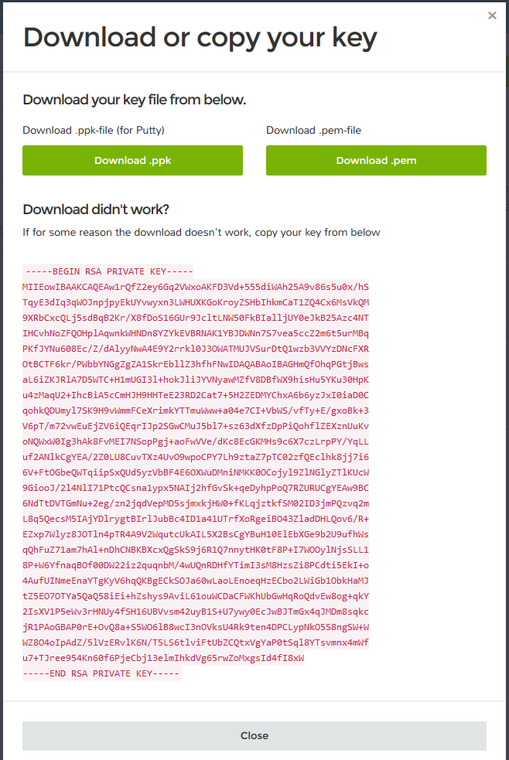

Open PuTTY and connect as Pageant.exe has your passphrase stored, you connect without entering your password:Ĭonnect to your Grid server as the Server Admin. Right click the icon and click on "Add Key." Connect using your SSH key with PuTTY When it loads, it should be displayed in your tray. In this case, it will be 'thatguy.' chmod 600 authorized_keys2Ĭhown thatguy:psacln. You will want to protect the file and change its owner to the user in question. WWG4bUAl+l6pFDwQwEtm2KN6C4lyfJNMDNqdtjqw9/HvAfO5xoyceQ= It should look similar to the following: ssh-rsa AAAAB3NzaC1yc2EAAAABJQAAAIBvo93MZvQS8gtB5+fy8yPT+6SrZfJAA4C4lJYydp/į8KfXTU303xLiTSrXcwDOSUykBi7DVdloOIpZQtQOFJMEwXx+wMWausxp0T5W//pfMfYTg4ZDDQ su thatguyĬut and paste on one line your public ssh key. In our example, the user is "thatguy" for "." This is an already existing FTP user with SSH access.Ĭonnect to your DV server as the root user. Let's choose a user for which to create the SSH key. Then click 'Save public key' and 'Save private key.' Select & configure your user
#Create ssh keys password
Be sure to use a strong password read our guide here. Once the key is generated, enter your key passphrase. Ls: /root/.ssh: No such file or directoryĬreating an SSH key in PuTTY Requirements If for either of these tests, you get blank output, or a message similar to the following: You should have a folder called ".ssh" with drwx- (700) permissions. Note that the directory needs to include the file called "authorized_keys" with -rw- (600) permissions.įinally, run this command to check the permissions on your. You should see output similar to the following: On your remote server, run the following: That's it! You should now be able to log into your server from this computer without being prompted for a password. ssh directory on the server, and the files it contains, have the correct permissions:Ĭhmod 600 ~/.ssh/authorized_keys & chmod 700 ~/.ssh/ Make sure you're logged in as the user for whom the key was created. Remember to replace the username and hostname with your connection info:Ĭat ~/.ssh/id_rsa.pub | ssh 'cat - > ~/.ssh/authorized_keys'ĥ. If you don't have an existing authorized_keys file, it creates one. The command below reads the content of the key you just created on your computer, and appends that key to the authorized_keys file on your server.


 0 kommentar(er)
0 kommentar(er)
